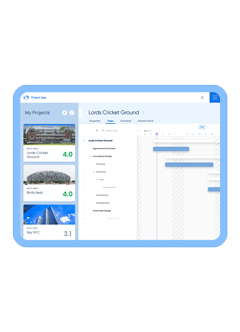The foundation of a successful billing process? Your invoices. Learning how to improve your invoices? Simple.
The Invoice Problem
Invoicing has the potential to make or break your AEC firm’s billing process. Why? Because if your invoices aren’t right, it means more work. More work going back and forth with your client to resolve a late payment, and more work for your Accounting team to correct inaccuracies and issue credits to clients. Not to mention, the client can lose confidence in your billing practices.
Essentially, you can’t improve your billing process without making sure your invoicing is under control first. In this post, I will go through the fundamentals of invoicing and how you can focus on these areas to get your invoicing in check.
The Fundamentals of Successful Invoicing
Successful invoicing has two fundamental elements: accuracy and timeliness. Getting these two elements right, will set the foundation for your firm’s billing process. Now, let’s examine each of them.
Accuracy
Whether it’s the layout, or how you need to arrive at charges based on the contract type used for a project – the accuracy of your invoices needs to be exact.
Layout
Each contract type used in the AEC industry, along with a client’s requirements, dictates the way information must be presented in an invoice. For instance, a contract may require you to show values for the project fee, billed to date, amount being billed, and fee remaining.
How that information is summarized can also vary. The contract may require invoice values to be grouped based on phases or based on specific tasks of your project. To avoid complications down the line when billing, make sure your contract is clear when it comes to the specifics of how invoices need to be formatted.
Values
In addition to the layout of an invoice, contract types also influence how to arrive at the invoice value and when you’re allowed to send that invoice to your client.
Here’s an example: A Fixed Fee contract only allows billing when a certain amount of progress is made on a project, whereas with a Time and Material contract, you may be expected to bill your client on a monthly basis. For calculating the detailed charges on an invoice, a Time and Material contract’s charges are based on a pricing schedule or a markup, while a Fixed Fee contract’s charges are based on the percent complete of a project.
The bottom line is that an invoice must be fundamentally accurate and complete. Whether it’s the amount charged for an employee, properly summing up detailed charges so they equal the invoice value, or including the appropriate tax on an invoice – you need to get all these values right, every time.
Timeliness
The faster you get invoices out the door, the sooner you can collect money from clients and use that cash for your business.
So, the biggest thing you can do to improve the timeliness of your invoices is to make sure charges are posted to projects on a regular basis. For instance, how often have your employees not submitted their expense reports on time? If this happens, and you wait too long after a project is complete to bill the client for those expenses, they may question or even reject those charges on the invoice.
Think of it this way: the closer you bill to the project’s timeframe, the smoother your client’s approval will go, and the sooner you’ll get paid for completed work.
Conclusion
Getting your invoicing practices right is synonymous with improving your billing process. Otherwise, when your invoices are inaccurate, or the layout doesn’t meet the contract specifications, it leads to conversations with clients to fix those issues.
And if these conversations happen on an ongoing basis, you can expect clients to lose faith in the quality of your invoices. This can cause further delays in payment as clients may now further validate, or question charges every time you send an invoice.
So first, get the layout and the values right on your invoices (make sure the project is setup according to the terms of the contract with your client). Then, once you have those right, make sure to review charges and bill your client on a regular basis. Now, with these changes, your firm will have the foundation it needs to start focusing on how it can take its billing process to the next level.
Interested in learning more about invoicing and billing? Check out The Ultimate ERP Glossary for AEC Firms that’s packed with 150 common industry terms spanning the entire project lifecycle. Download your free copy by clicking below!









